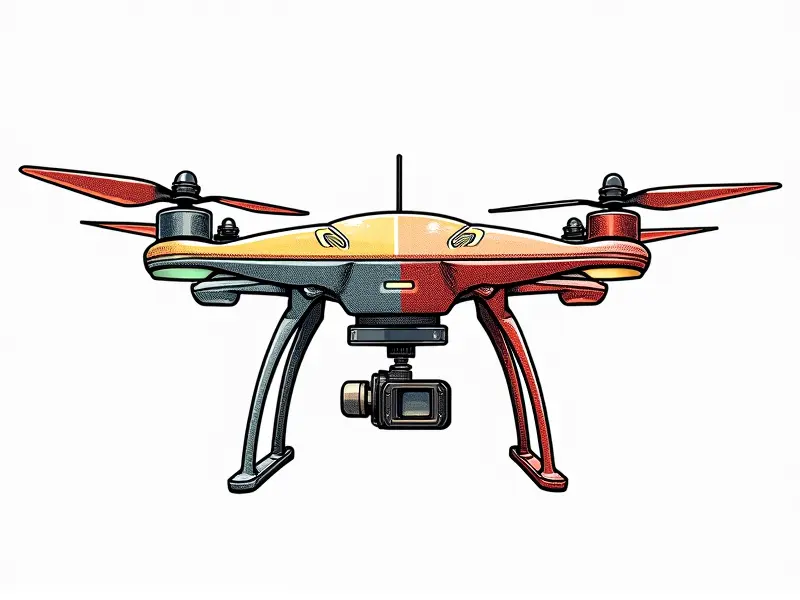What are RC planes made of?

Anatomy of an RC Airplane
The anatomy of a remote-controlled (RC) airplane is intricate and multifaceted, comprising various components that work in harmony to ensure optimal flight performance. Understanding the structure and materials used in these aircraft can provide valuable insights for enthusiasts and newcomers alike.
Components of RC Aircraft
An RC plane consists of several critical parts, each serving a specific function:
- Fuselage: The main body that houses the electronics, motor, battery, and other essential components.
- Wings: Provide lift and stability during flight.
- Tail Section: Includes the horizontal and vertical stabilizers for pitch and yaw control.
- Elevators: Control pitch movement.
- Ailerons: Manage roll movement by changing the angle of attack on either side of the wing.
- Rudder: Controls yaw movement, allowing for directional changes.
Materials Used in RC Planes
The choice of materials significantly influences the performance and durability of an RC plane. Commonly used materials include:
- Balsa Wood: Lightweight yet strong, ideal for constructing wings and fuselage.
- Plywood: Provides structural rigidity and is often used in conjunction with balsa wood.
- Airfoils: Specialized shapes designed to optimize lift and reduce drag.
- Fiberglass: Adds strength without adding excessive weight, commonly found in high-performance models.
Building Blocks of RC Planes
The fundamental building blocks of an RC plane include:
- Frame: The skeletal structure that holds all components together.
- Motors and Propellers: Provide the thrust necessary for flight.
- Battery Packs: Supply power to motors, servos, and other electronic systems.
- Servos: Actuators that control the movement of control surfaces like ailerons, elevators, and rudder.
Essential RC Plane Parts
The following parts are crucial for the functionality and performance of an RC plane:
- Control Surfaces: Include ailerons, elevators, and rudder, which enable maneuverability.
- Receivers: Receive signals from the transmitter to control the aircraft's movements.
- Transmitters: Send commands to the receiver via radio frequency (RF).
RC Plane Material Guide
Selecting appropriate materials is crucial for constructing an RC plane. Here’s a guide to some of the most commonly used materials:
- Balsa Wood: Ideal for lightweight and strong structures.
- Plywood: Provides structural integrity, often layered with balsa wood.
- Fiberglass: Enhances durability without adding significant weight.
What Makes Up RC Airplanes?
The composition of an RC plane involves a combination of lightweight yet robust materials to ensure optimal flight characteristics. Key elements include:
- Balsa Wood and Plywood: For structural integrity.
- Fiberglass Sheets: To reinforce critical areas without adding bulk.
RC Plane Structural Elements
The structural elements of an RC plane are designed to withstand the stresses of flight while maintaining a low weight-to-strength ratio. These include:
- Fuselage Frame: Typically made from balsa wood and plywood.
- Wing Spars: Provide rigidity and strength to the wings.
Anatomy of an RC Plane
The anatomy of an RC plane encompasses its internal and external components, each playing a vital role in flight performance. Understanding these elements is essential for both building and flying RC planes effectively:
- Fuselage: Houses the electronics and motor.
- Wings: Generate lift to keep the plane airborne.
Essentials for RC Plane Crafting
Crafting an RC plane requires a thorough understanding of its essential components. Key elements include:
- Fuselage and Wings: Constructed using lightweight yet durable materials like balsa wood.
- Tail Section: Includes horizontal and vertical stabilizers for pitch and yaw control.
RC Plane Structural Materials
The structural materials used in RC planes are carefully selected to balance strength, weight, and cost. Common choices include:
- Balsa Wood: For its lightweight and high-strength properties.
- Plywood: Adds rigidity while maintaining a low profile.
Conclusion
The construction of an RC plane is a meticulous process that relies on the integration of various components and materials. From lightweight balsa wood to robust fiberglass, each element plays a crucial role in ensuring optimal flight performance and durability. Understanding the anatomy and essential parts of an RC plane can greatly enhance one's ability to build and fly these fascinating aircraft.

